What are the Differences between DevOps and GitOps?
What is DevOps?
When comparing GitOps vs DevOps, it's crucial to understand the contrasting approaches to software development and deployment.
DevOps is a term used to describe the cultural and technical practices that bring together software development (Dev) and IT operations (Ops) to improve collaboration, software quality, and delivery speed. It's an approach that combines automation, continuous integration, delivery, monitoring, and testing to ensure that software is built, tested, and deployed rapidly and reliably. DevOps results in faster feedback loops, more frequent releases, and better alignment between development and business objectives.
The key elements of DevOps include Continuous Integration (CI), Continuous Delivery (CD), and Continuous Deployment (CD). CI involves automating the building and testing of code changes regularly. CD, on the other hand, focuses on automating the code deployment to production. Continuous Deployment, on the other hand, automates the release of code changes to production.
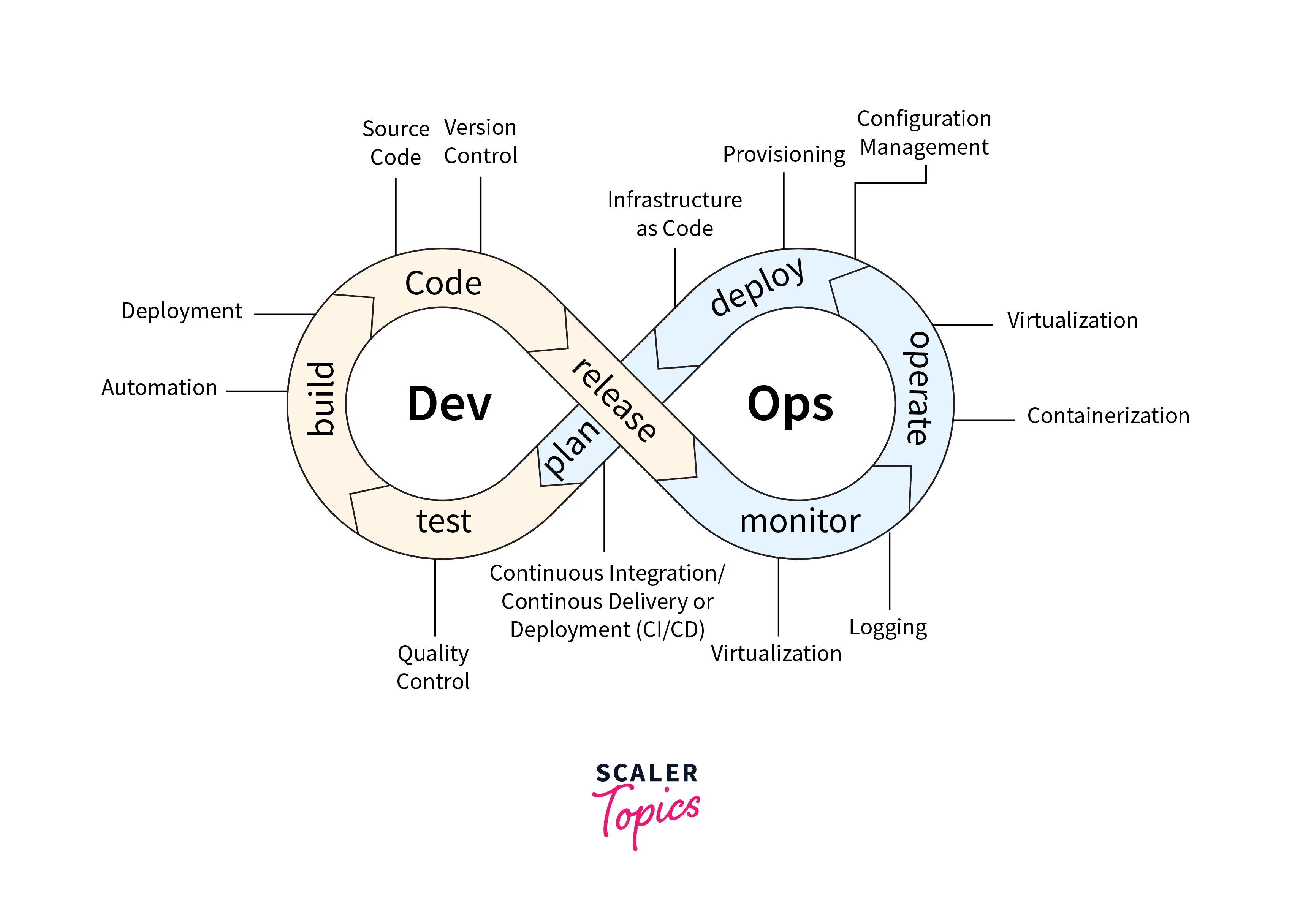
To learn more about the principles and practices of DevOps, check out this comprehensive guide on What is DevOps?
How to Integrate a DevOps Strategy
Integrating a DevOps strategy requires a structured approach and a clear understanding of the DevOps VS GitOps debate. Here are some steps you can follow:
-
Define your goals
- Identify the goals and objectives you want to achieve with your DevOps strategy.
- It helps you select the appropriate tools and technologies that align with your business objectives.
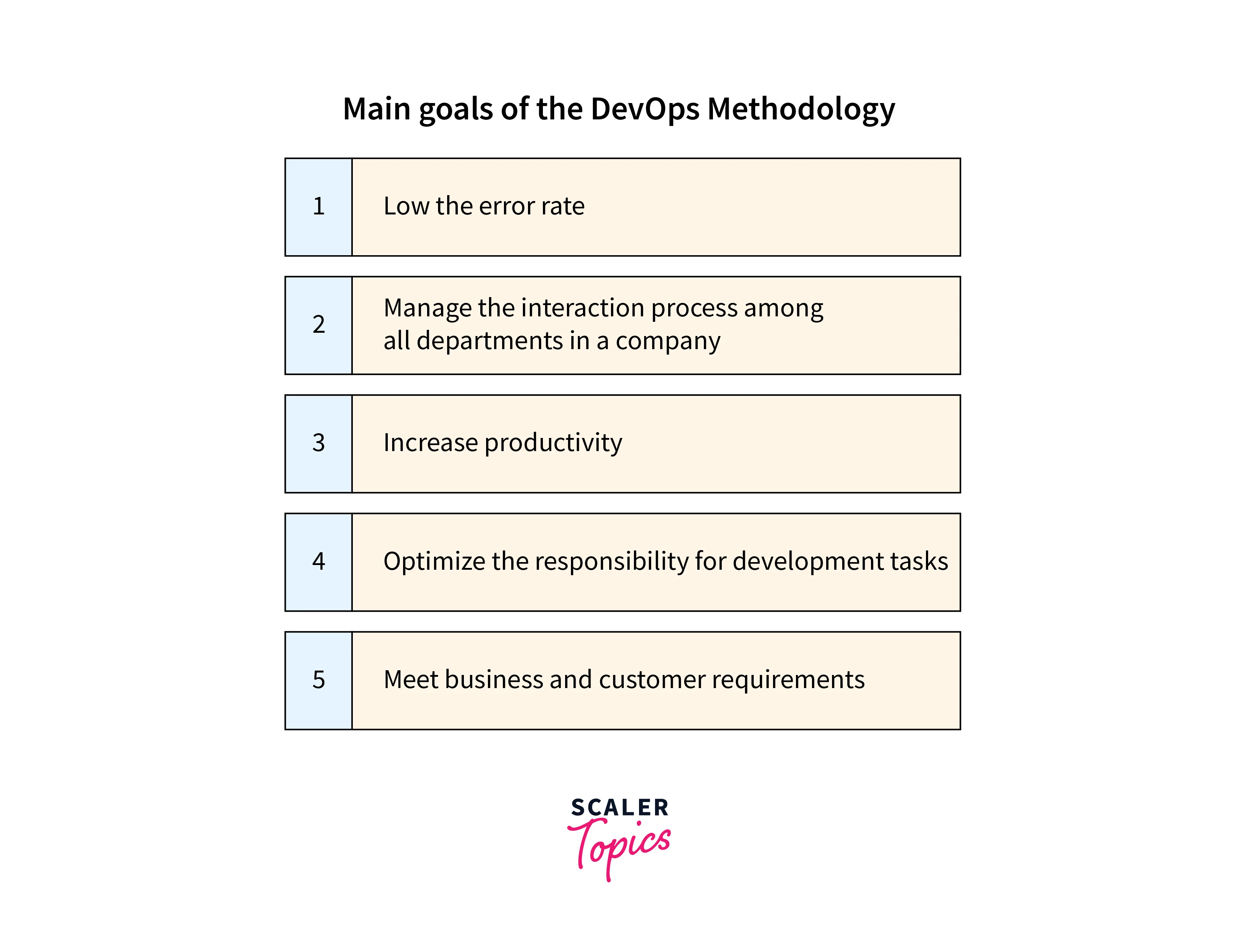
-
Evaluate your existing infrastructure
- Analyze the existing infrastructure, workflows, and processes to identify the gaps and inefficiencies.
- This way, you could identify the areas where you need to implement the best practices.
-
Implement DevOps practices
- Start implementing DevOps practices like Continuous Integration (CI) and Continuous Deployment (CD) to streamline your software delivery process.
- Use tools like Jenkins, CircleCI, or TravisCI to automate your build, test, and deployment processes.
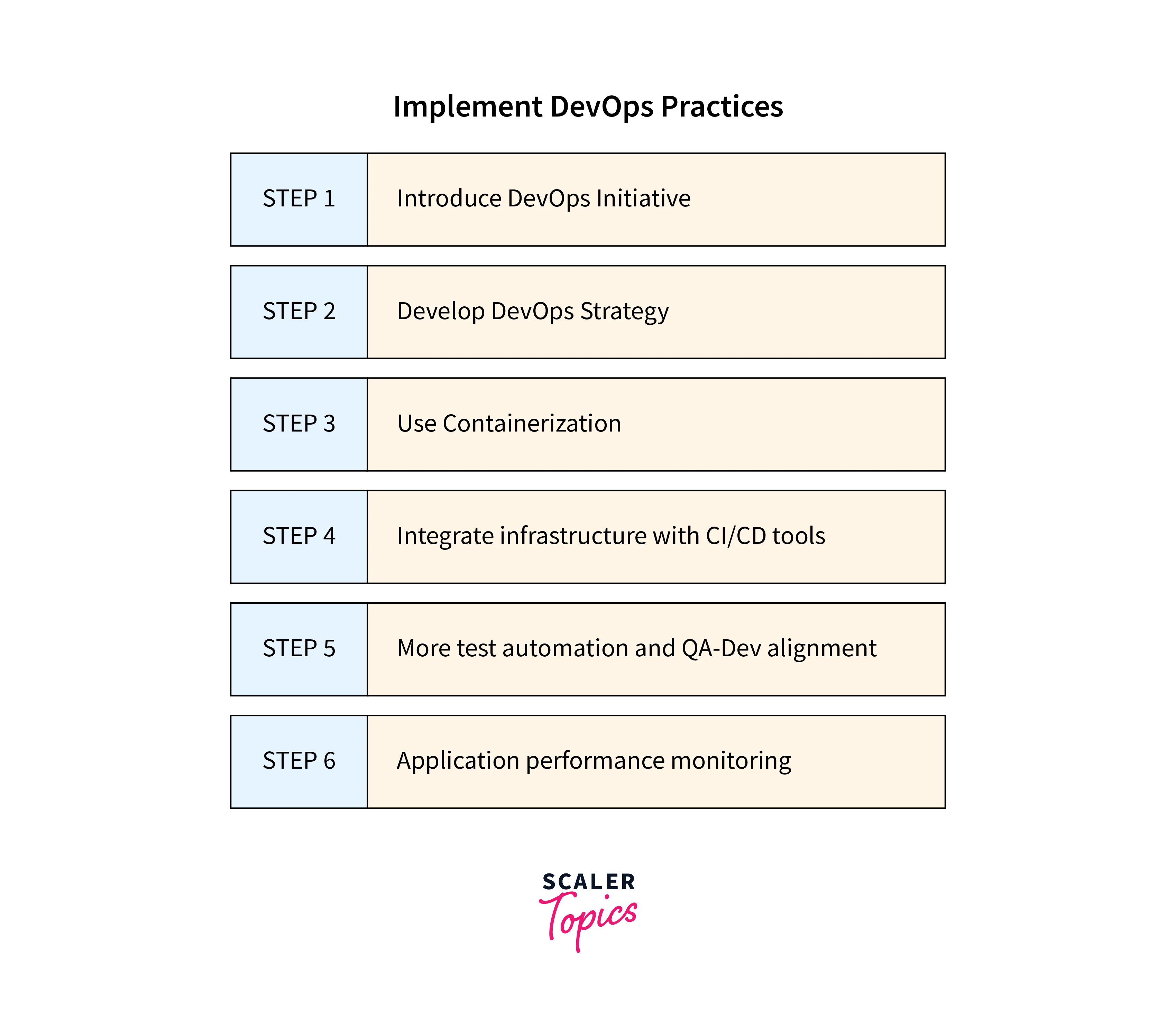
-
Embrace DevOps culture
- DevOps is not just a set of practices but also a culture.
- Encourage collaboration between development and operations teams, and promote a culture of continuous improvement and experimentation.
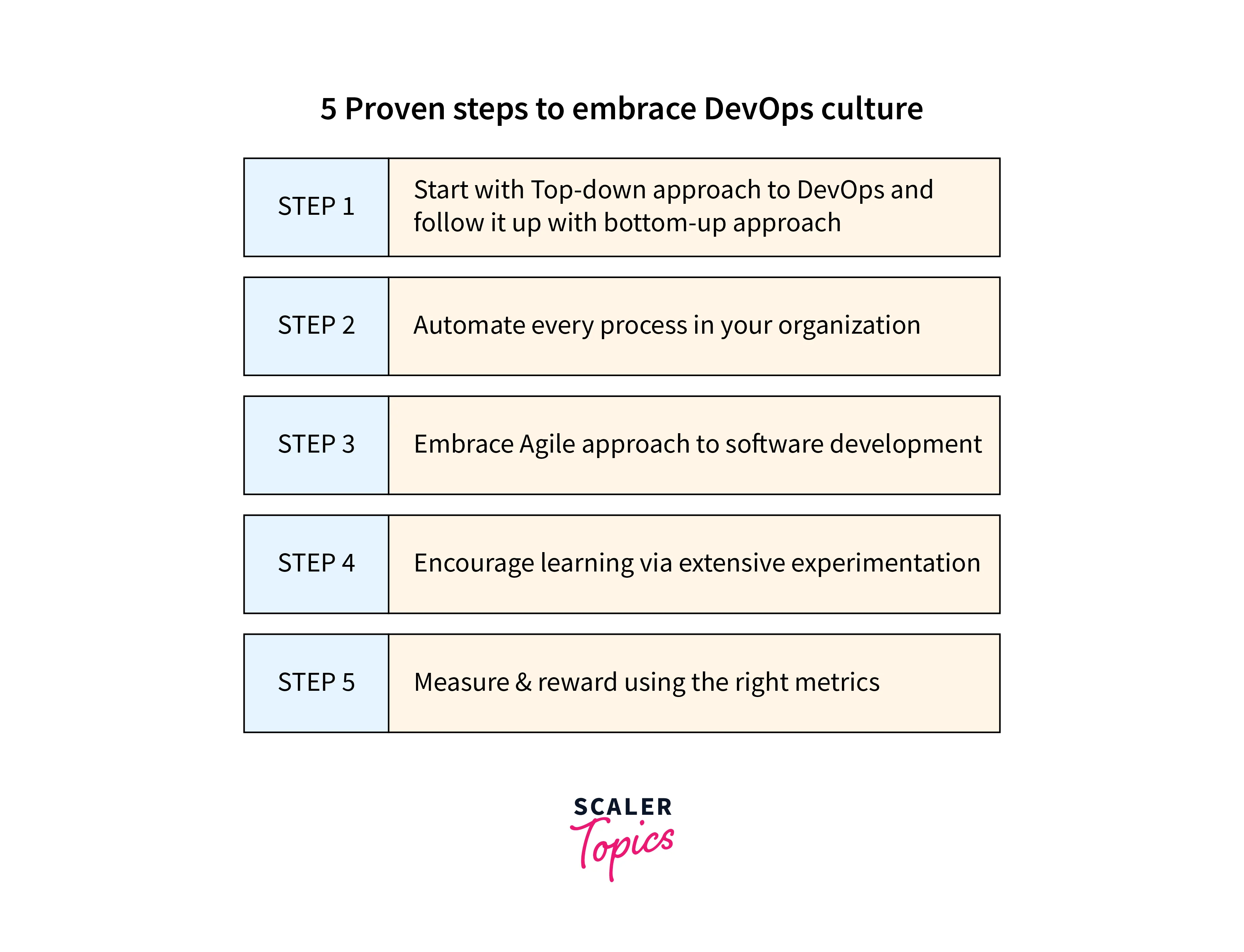
-
Measure your progress
- As you implement your DevOps strategy, measure your progress.
- This will help you to identify what is working well and what needs to be improved.
-
Continuously improve
- DevOps is an ongoing process
- Continuously improve your DevOps strategy as you learn more and your needs change.
Following these steps and embracing best practices, you can streamline the software delivery process, reduce errors, and achieve faster time-to-market.
An Overview of GitOps
GitOps is a DevOps methodology that uses Git as the single source of truth for declarative infrastructure configuration. In GitOps, the team defines the desired state of the infrastructure in Git and implements any modifications to the infrastructure by committing changes to Git. GitOps is a highly flexible methodology that can be employed with any declarative infrastructure, although Kubernetes is the frequent one.
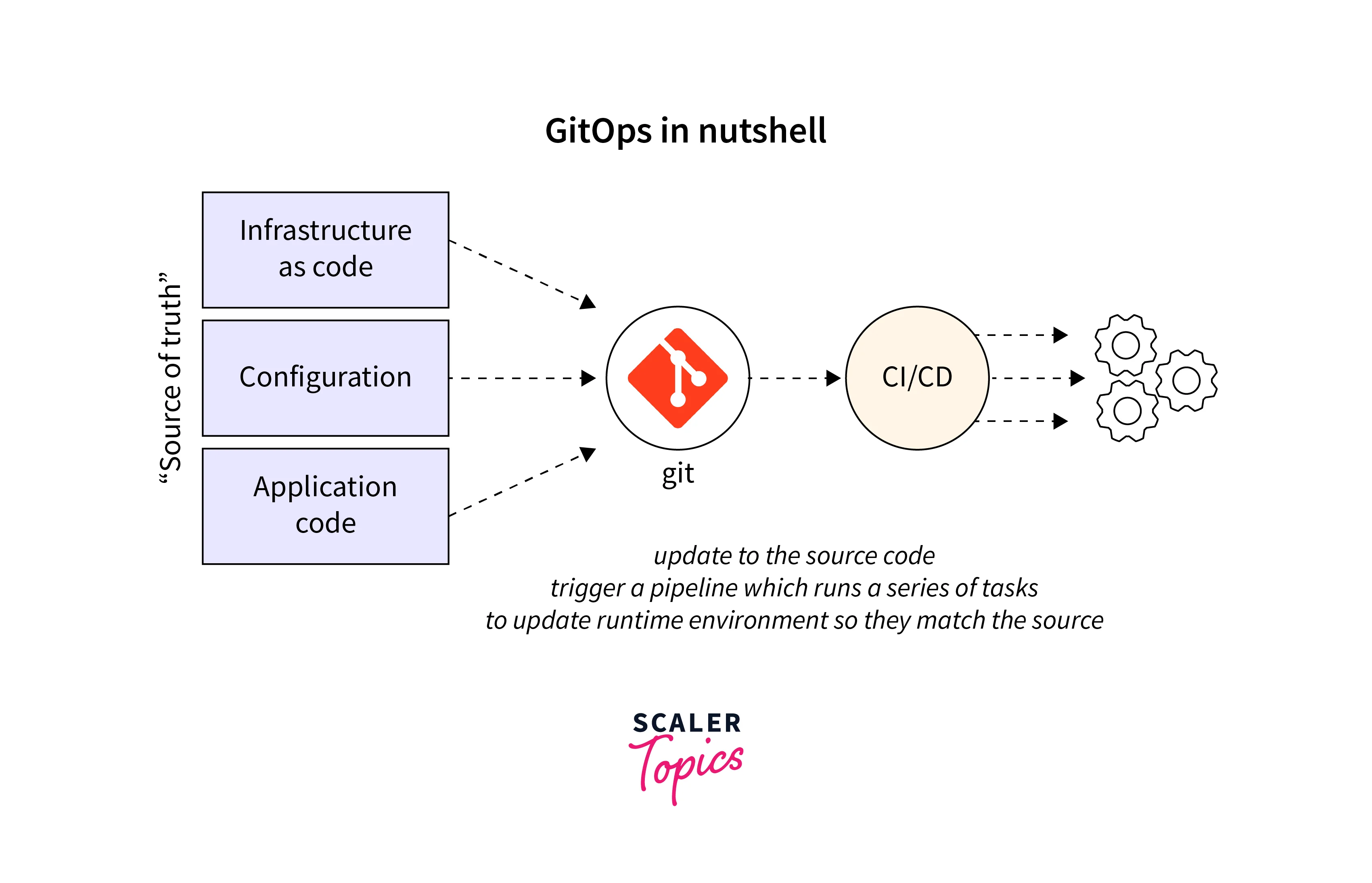
GitOps follows the following principles:
- The source of truth for infrastructure configuration is a Git repository.
- Infrastructure is declaratively defined in the Git repository.
- Changes to the infrastructure are automatically applied when they are committed to the Git repository.
- The desired state of the infrastructure is always in sync with the actual state of the infrastructure.
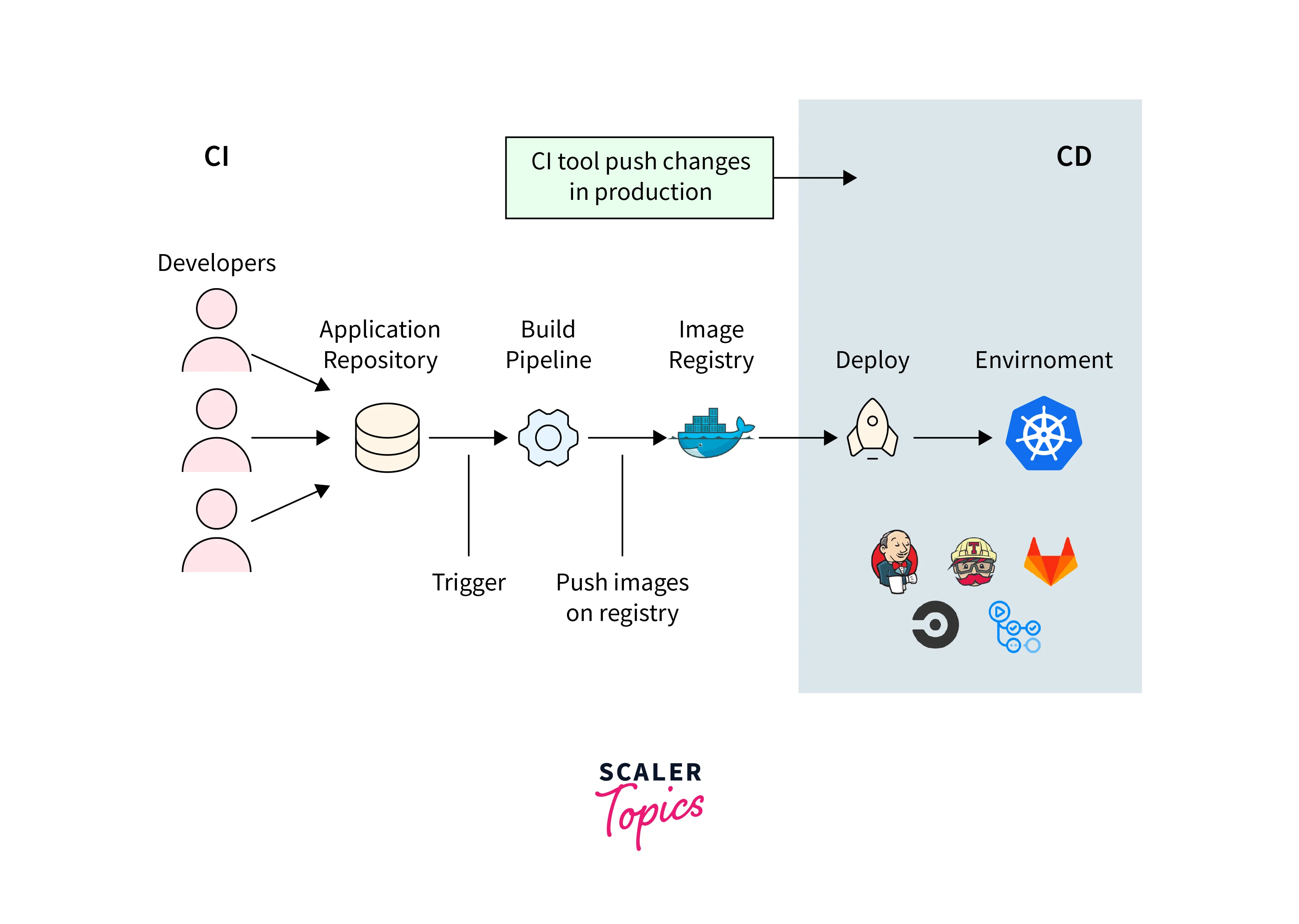
GitOps has several benefits, including:
- Increased reliability and consistency of infrastructure deployments.
- Reduced risk of errors and outages.
- Improved security and compliance.
- Increased agility and flexibility.
- Reduced costs.

If you are looking for a way to improve the way you manage your infrastructure, GitOps is an option to consider.
How to Integrate a GitOps Strategy
Integrating a GitOps strategy involves implementing a series of steps, which can vary based on the organization's needs and goals. Here are some general guidelines to help organizations integrate GitOps:
- Understand your current state
- Before integrating GitOps, you need to understand your current processes, tools, and culture.
- Set goals
- Once you understand your current state, you should set goals for your GitOps integration.
- These goals should be specific, measurable, achievable, relevant, and time-bound.
- Choose a GitOps platform
- Several GitOps platforms are available in the CNCF landscape, such as ArgoCD, FluxCD, and GitLab Pipelines.
- Choose a platform that meets your specific needs and requirements.
- Configure your GitOps platform
- After choosing the GitOps platform, configure it to meet your specific needs.
- This includes configuring the platform to connect to your infrastructure and configuring the platform to deploy your infrastructure changes.
- Start using GitOps
- Once you have configured your GitOps platform, use it to manage your infrastructure.
- This includes committing changes to your infrastructure configuration to Git and using the GitOps platform to deploy those changes to your infrastructure.
- Monitor your infrastructure
- Once you have started using GitOps to manage your infrastructure, monitor the infrastructure to ensure it is running as expected.
- This includes monitoring the health of your infrastructure and monitoring the performance of your infrastructure.
- Continuously improve
- GitOps is an ongoing process. Continuously improve your GitOps strategy as you learn more and your needs change.
- This includes making changes to your infrastructure configuration, making changes to your GitOps platform, and making changes to your monitoring and alerting procedures.
By following these steps, organizations can successfully integrate a GitOps strategy and experience the benefits of improved efficiency, reliability, and suitability of development processes. It is important to remember that GitOps is not a one-time implementation but a continuous improvement and iteration.
The Differences between DevOps and GitOps
When talking about DevOps and GitOps, there are some key differences. While both models focus on improving the software development process and the collaboration between teams, there are some fundamental differences in how they achieve these goals.
Let's delve into a detailed comparison of GitOps vs DevOps and explore their unique characteristics.
a. DevOps – Key Elements
The following are some key elements of DevOps:
- Agile development methodologies
- Continuous Integration (CI) and Continuous Delivery/Deployment (CD)
- Infrastructure as Code (IaC)
- Configuration Management
- Collaboration and communication between teams
- Automation of processes and workflows
b. GitOps – Key Elements
On the other hand, the following are some elements of GitOps:
- A focus on using Git as the single source of truth for infrastructure and application deployment
- A declarative approach to infrastructure management
- Continuous state reconciliation
- Git-based workflows and version control for application and infrastructure configurations
- Automated deployments triggered by Git events
c. DevOps VS GitOps: Comparison Table
To facilitate a comprehensive understanding, let's refer to the comparison table below: GitOps vs DevOps.
| Parameters | DevOps | GitOps |
|---|---|---|
| Approach | Focused on automating the software development and delivery process. | Focused on managing infrastructure as code. |
| Tool | Jenkins, Ansible, Terraform, etc. | Git, Kubernetes, etc. |
| Flexibility | More flexible than other approaches because it allows for usage with various tools and processes. | It has less flexibility since it's tightly integrated with Git. |
| Correctness | It is more likely to be correct because it relies on well-established principles. | Less likely to be correct, as it is a newer approach. |
| Focus | Focused on the entire software development and delivery process. | Focused on managing infrastructure as code. |
Both models have strengths and can be effective depending on the needs and goals of an organization.
DevOps Vs. GitOps – Which Model is Better?
GitOps vs DevOps is a topic of much debate in the IT industry. Both models have their strengths and weaknesses, so the best choice for your organization will depend on your specific needs and goals.
When to use DevOps
DevOps is a good choice for organizations that want to:
- Improve collaboration between development and operations teams
- Adopt an agile development approach
- Automate the software development and deployment process
- Manage infrastructure as code
- Monitor and analyze application performance and user behavior
When to use GitOps
- GitOps is a good choice for organizations that want to:
- Manage infrastructure as code
- Automate the deployment of infrastructure
- Scale to manage large, complex infrastructures and fleets of clusters
- Ensure compliance with security and regulatory standards
Choosing the right model
GitOps vs DevOps is a complex topic, and there is no easy answer to the question of which approach is better. Ultimately, the choice between DevOps and GitOps depends on your organization's specific needs and goals. Both models can help teams work more efficiently and effectively, and both require a culture of continuous improvement and collaboration. By carefully considering the benefits and trade-offs of each approach, you can make an informed decision about which model fits you.
FAQs
Q. Is GitOps the next big thing in DevOps?
A. GitOps is significantly popular due to its ability to simplify and automate the delivery process. While it's hard to predict if it's the "next big thing" in DevOps, GitOps is a powerful tool that can streamline the software delivery pipeline.
Some people believe that GitOps is the future of DevOps, while others believe that it is simply a complementary approach. Only time will tell which is correct.
Q. Is GitOps CI or CD?
A. GitOps is not CI or CD in and of itself. It is a way of managing an infrastructure that uses CI/CD tools and processes.
Q. What is the major advantage of GitOps?
A. The major advantage of GitOps is that it provides a single source of truth for infrastructure configuration. Thus making it easier to track changes, roll back to previous versions, and automate deployments.
Q. What are the 3 core practices of GitOps
A. The three core practices of GitOps are:
- Declarative configuration
- Infrastructure is defined in code rather than in manual procedures. One can easily track changes, roll back to previous versions, and automate deployments.
- Intuitive automation
- Infrastructure changes are made through a pull request workflow. By doing this, organizations can ensure that only authorized changes get deployed to the production environment.
- Policy-driven enforcement
- The desired state of the infrastructure is enforced by a controller, which ensures that the infrastructure always matches the configuration in Git. This results in improved reliability of the infrastructure.
Q. How is GitOps different from DevOps?
A. While GitOps is a subset of DevOps, there are some differences between the two:
- DevOps is a broader philosophy and cultural shift emphasizing collaboration, communication, and automation across the entire software delivery pipeline.
- GitOps is a specific practice within the DevOps framework that focuses on using Git as the single source of truth for infrastructure and application deployments and automating the delivery process using continuous delivery and reconciliation.
Conclusion
After discussing DevOps VS GitOps in detail, here are some key takeaways:
- DevOps vs. GitOps
- Both are approaches to software development and infrastructure management.
- DevOps focuses on collaboration between development and operations teams.
- GitOps emphasizes version control and automation through Git repositories.
- The best choice for an organization will depend on its specific needs and goals.
- Benefits of DevOps
- Faster time-to-market
- An improved collaboration between teams
- Benefits of GitOps
- Version control
- Audibility
- Reduced time to recovery in case of failures
- Using both together
- GitOps can be considered a complementary approach to DevOps that focuses on automating infrastructure management tasks.
- To summarize, GitOps vs DevOps provides insights into alternative approaches to software development and infrastructure management
- Organizations should decide between DevOps and GitOps by considering their goals, resources, and expertise.
